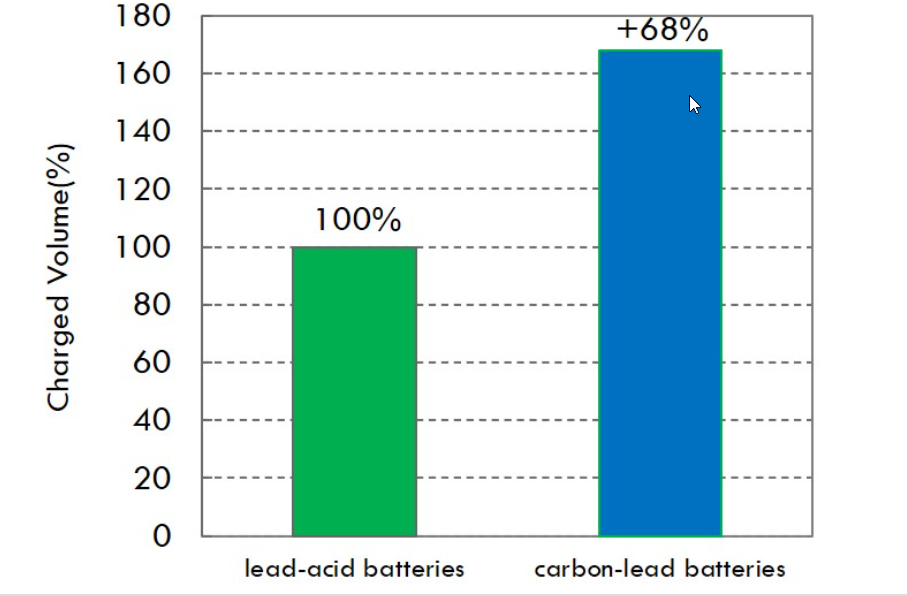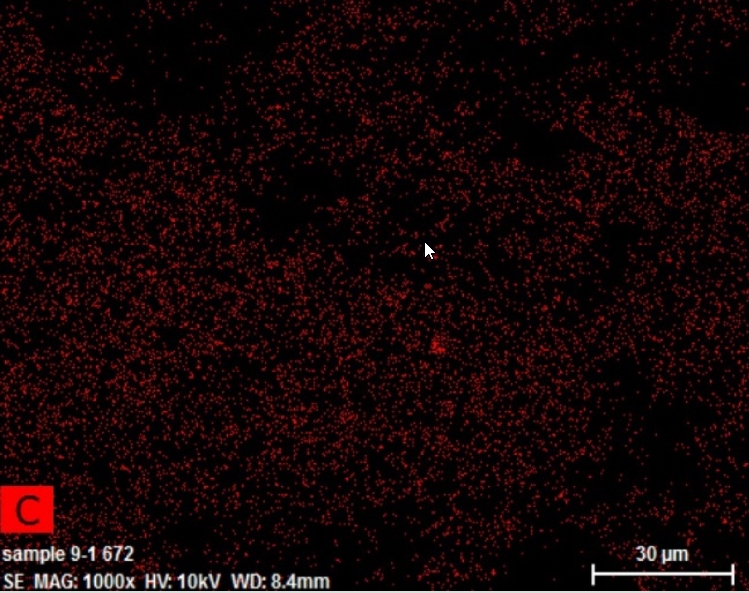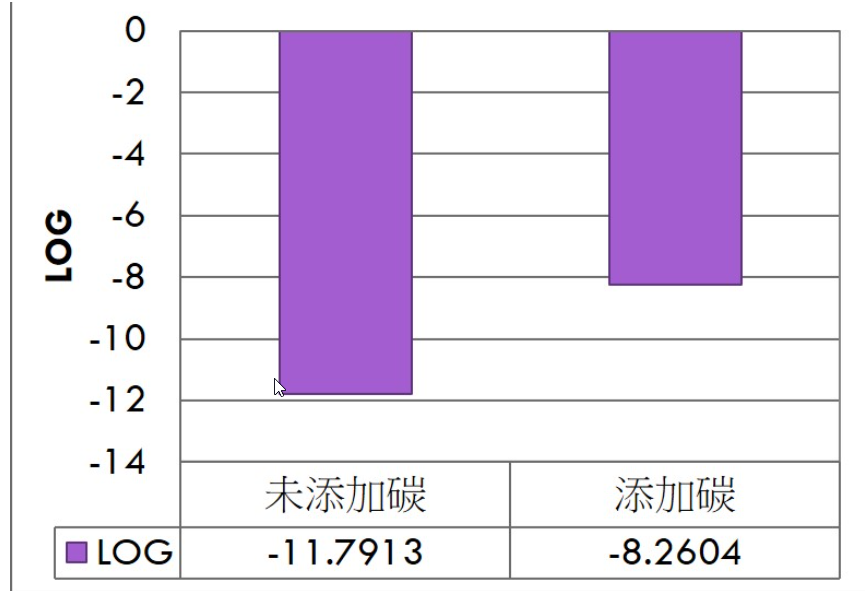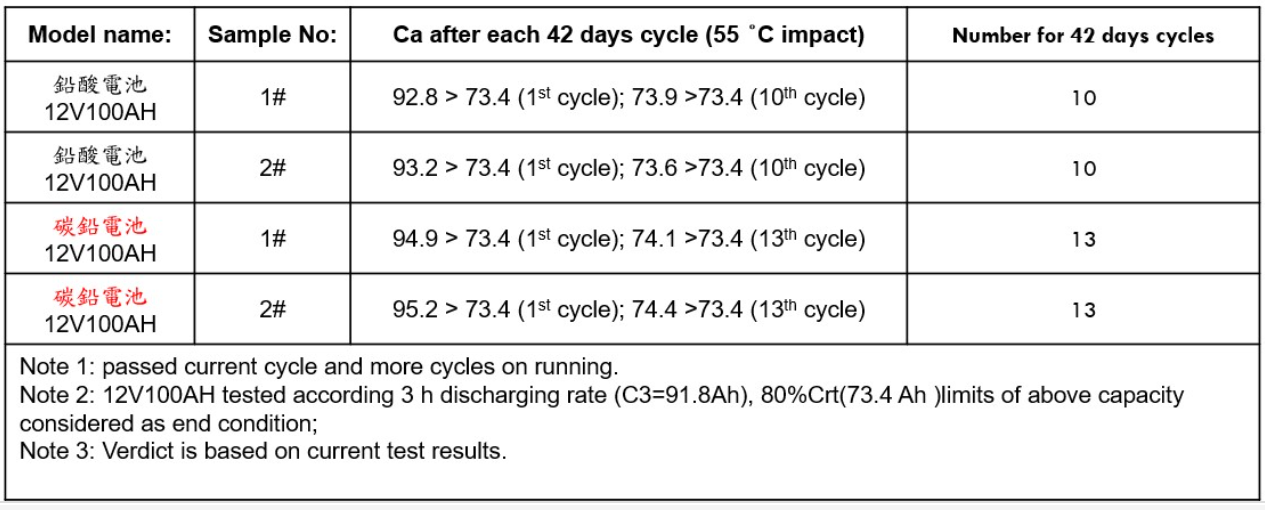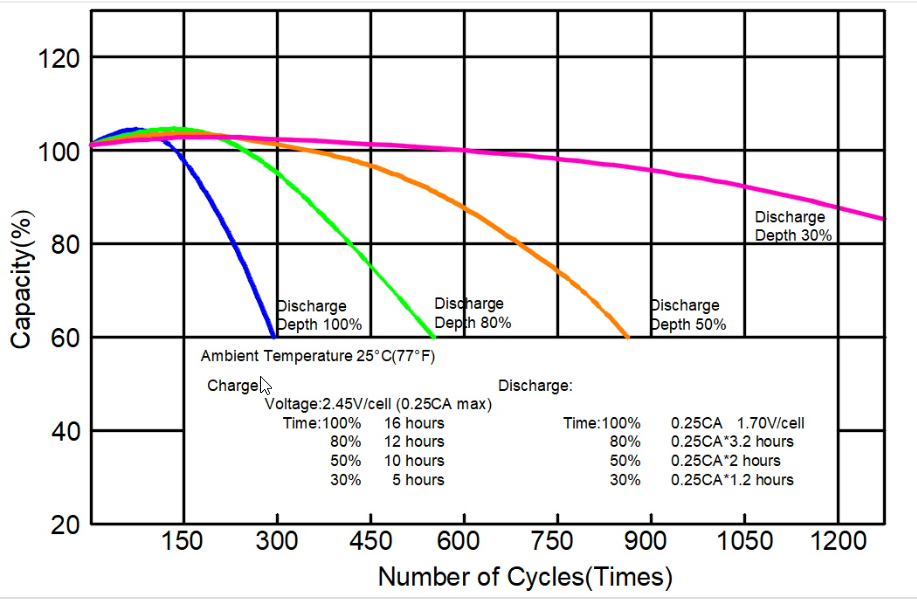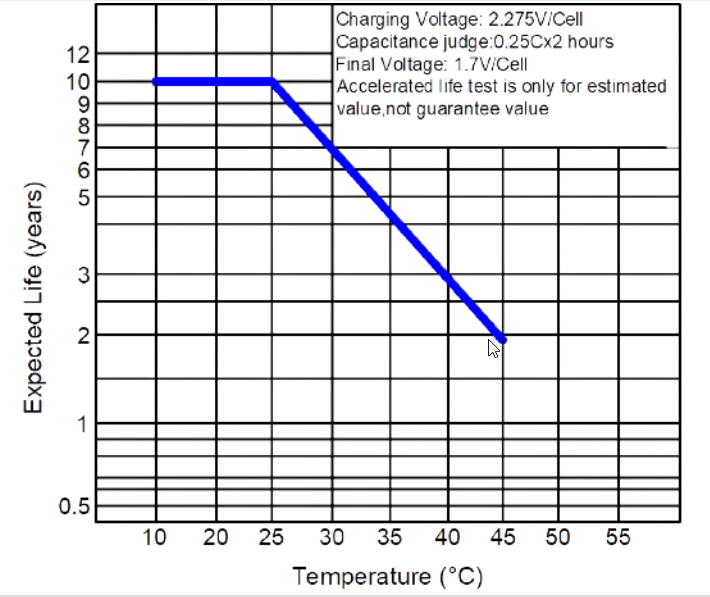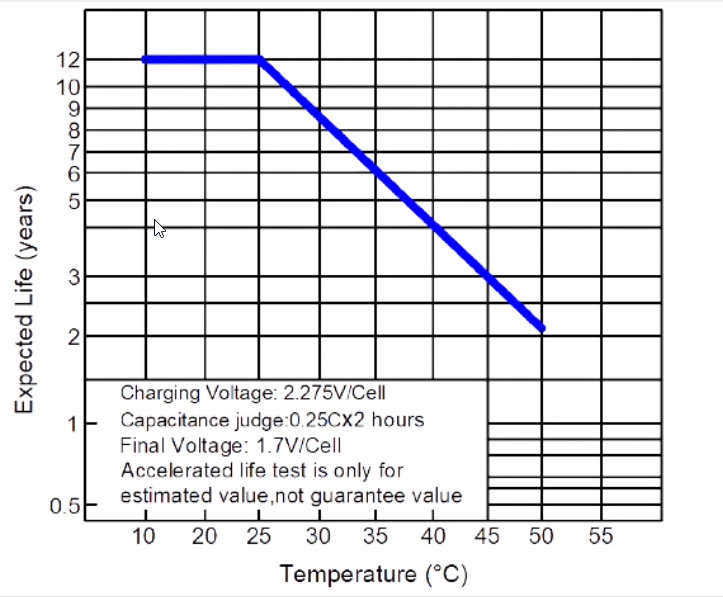Charging performance of lead-acid batteries and carbon-lead batteries
Charging performance test conditions:
(1) Discharge: the battery is discharged by 50%
(2) Stand still: the battery electrolyte temperature is cooled to 0℃ after discharge
(3) Charging: charge
at 14.4V for 10 minutes to record the maximum received charging current.
Electrode plate mixed carbon conductivity LOG
After mixing the carbon plate with the numerical value in the chart on the left Conductivity increased
by 42%
